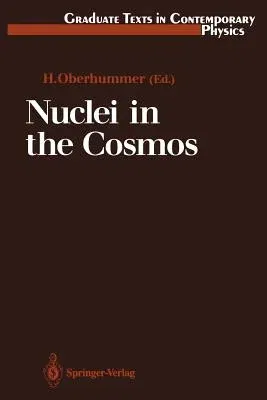Nuclear astrophysics as it stands today is a fascinating science. Even
though, compared to other scientific fields, it is a young discipline
which has developed only in this century, it has answered many questions
concerning the under- standing of our cosmos. One of these great
achievements was the concept of nucleosynthesis, the creation of the
elements in the early universe in interstellar matter and in stars.
Nuclear astrophysics has continued, to solve many riddles of the
evolution of the myriads of stars in our cosmos. This review volume
attempts to provide an overview of the current status of nuclear
astrophysics. Special emphasis is given to the interdisciplinary nature
of the field: astronomy, nuclear physics, astrophysics and particle
physics are equally involved. One basic effort of nuclear astrophysics
is the collection of ob- servational facts with astronomical methods.
Laboratory studies of the nuclear processes involved in various
astrophysical scenarios have provided fundamen- tal information serving
both as input for and test of astrophysical models. The theoretical
understanding of nuclear reaction mechanisms is necessary, for example,
to extrapolate the experimentally determined reaction rates to the
thermonuclear energy range, which is relevant for the nuclear processes
in our cosmos. Astrophysical models and calculations allow us to
simulate how nuclear processes contribute to driving the evolution of
stars, interstellar matter and the whole universe. Finally, elementary
particle physics also plays an important role in the field of nuclear
astrophysics, for instance through weak interaction processes involving
neutrinos.


